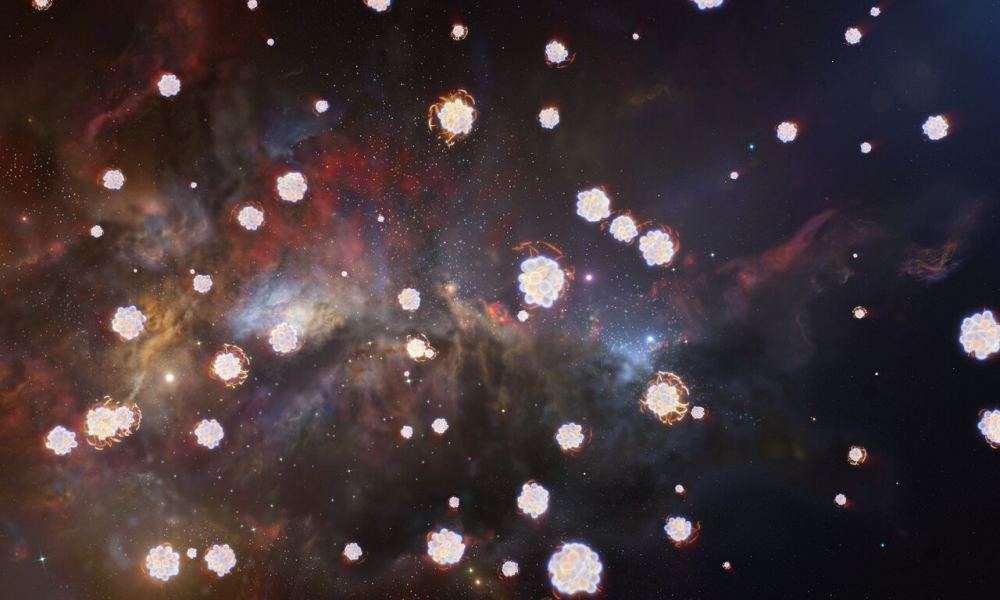The first stars were odd ducks. Nobody’s observed them yet (although astronomers are hopeful JWST might spot them someday) but their ghosts remain. Born more than 13.5 billion years ago, they were very different from most of those we know today. These were massive monsters made mostly of hydrogen and helium. And, when they exploded as supernovae, their “starstuff” got scattered to space. Astronomers have now found the chemical remains of those stars in three distant gas clouds observed by European Southern Observatory’s Very Large Telescope.
How can astronomers detect those remains? It’s a tough task because the succeeding generations of stars recycled the starstuff. When those “child” stars died, they scattered their own heavier elements throughout space, which, in turn, got used in the next generations of stars.
So, the very first stars and their remains are pretty much history. Or, are they? It turns out maybe not. “Primordial stars can be studied indirectly by detecting the chemical elements they dispersed in their environment after their death,” said Stefania Salvadori, Associate Professor at the University of Florence.
She and a colleague used data from the VLT to search for gas clouds with the chemical elements left over from the deaths of the first stars. Light from distant quasars passing through those clouds provided a way to look for those elements.

Understanding Stellar Chemical Wreckage
The mass of these early stars and the strength of their explosions determined which elements were spread to space. The first ones may have been mainly hydrogen and helium, but they cooked up other elements inside their cores. That is, in fact, what stars do throughout their lives. They turn hydrogen into helium and other “heavy” elements in their cores. Typically, they form carbon, oxygen, silicon, and so on, all the way up to iron. When they die all that material gets scattered to interstellar space. Those like the Sun live fairly long lives and end up as white dwarfs. That’s after they go through a planetary nebula phase. Only the most massive ones die in supernova explosions.

Those first massive stars died in really tremendous supernova explosions and those provided the chemical remains the astronomers found. However, some of those first explosions were not energetic enough to scatter elements like iron that existed in their cores.
The team had to take that into account, so they searched for gas clouds from stars that exploded as low-energy supernovae. The three they studied were in the early Universe and had very little iron but plenty of carbon and other elements.
Implications for Other Stars
Interestingly, the peculiar chemical composition in the clouds studied by Salvadori and her team shows up in many old stars in our own galaxy. These are second-generation stellar populations that formed directly from the “ashes” of the first ones. “Our discovery opens new avenues to indirectly study the nature of the first stars, fully complementing studies of stars in our galaxy,” explained Salvadori.
The second-generation ones had a much different, richer chemical composition than their “parents” from the early Universe. When they died, their “starstuff” became fodder for the third and subsequent generations. Our Sun is probably at least third-generation, often referred to as Population 1 because it’s rich in elements heavier than helium. So, finding the chemical remains of the earliest stars not only opens a window on their characteristics but gives insight into the next generations of stars that followed them.
For More Information
Astronomers Find Distant Gas Clouds with Leftovers of the First Stars
Evidence of first stars-enriched gas in high-redshift absorbers (link to PDF of paper)

